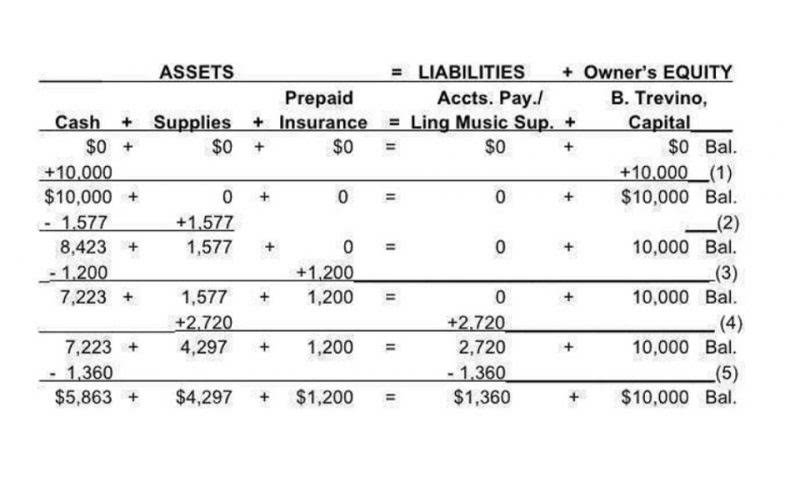It is also one of the key inputs in many financial models, so it is important to understand how it is calculated and used. After a company raises capital by selling stock, it opens doors to fractional ownership. This means investors get to own part of the corporation without buying it all.

Capital Stock vs.Treasury Stock: The Difference
Another problem with using capital stock for research is that it does not always reflect the current value of a company’s shares. For instance, if a company’s share price has been rising steadily over the past year, its capital stock may not have increased. The total value of the capital stock is determined by multiplying the total number of authorized shares by the par value per share. Share trading is the process of buying and selling shares within a company.
What is capital stock?

Truist Financial boosted their price objective on Amphenol from $76.00 to $82.00 and gave the company a “buy” rating in a research report on Thursday, October 24th. Finally, TD Cowen boosted their price objective on Amphenol from $60.00 to $63.00 and gave the company a “hold” rating in a research report on Friday, October 25th. Five equities research analysts have rated the stock with a hold rating, seven have assigned a buy rating and one has assigned a strong buy rating to the company’s stock.

Can a company increase its Capital Stock?

It represents not just a source of funding but also a way for investors to partake in corporate success through equity ownership—yielding potential dividends and appreciation in value over time. Many companies sell common stock to gather money they can invest back into their business. If capital stock things go well, these investors might get dividends from profits—but that’s not a sure thing; it depends on how well the company does each year. Every share within the capital stock carries value, which contributes to the overall worth of a company as seen on its balance sheet. This value is vital because it represents the money that shareholders have put into the company to keep it running and help it grow.
Ask Any Financial Question
This also is where a company will state the number of authorized stock they intend to use. The amount that a company receives from issuing capital stock is considered to be capital contributions from investors and is reported in the stockholder’s equity section of the balance sheet. If a firm has more equity, it means it might be stronger and have more room to grow. Companies issue different types of stocks, like common and preferred ones.
Capital stock is the number of common and preferred shares that a company is authorized to issue, according to its corporate charter. The amount received by the corporation when it issued shares of its capital stock is reported in the shareholders’ equity section of the balance sheet. Firms can issue more capital stock over time or buy back shares that are currently owned by shareholders. When calculating capital stock, all authorized shares of common and preferred stocks are included.
- When a company receives money in exchange for the shares in its capital stock, we refer to that as a capital contribution and that is reported as the “paid-in capital” on the balance sheet.
- Typically, each share of stock is assigned a par value of $1.00 or even a few pennies.
- If a firm has more equity, it means it might be stronger and have more room to grow.
- The amount of capital stock can never be more than the amount of’ authorized stock.
- The amount received by the corporation when it issued shares of its capital stock is reported in the shareholders’ equity section of the balance sheet.
For example, if there are 10,000 shares of capital stock and an investor owns 5,000 stocks, he owns 50 percent of the company. Capital stock is essentially the lifeblood of any corporation—it represents ownership and holds the potential to open doors for growth and stability. This concept isn’t just an abstract part of business; it translates into actual shares that could potentially virtual accountant yield dividends for shareholders. In accounting and finance, capital stock represents the value of a company’s shares that are held by outside investors.
Advantages of capital stock
When a company is formed, it determines the number of shares it wants to authorize as its capital stock. This number is specified in the company’s articles of incorporation and can be issued to shareholders in various ways, such as through public offerings or private placements. When a company initially issues shares of capital stock to a shareholder, the amount it receives will be recorded as paid-in capital in the corporation’s balance sheet. Investors can use capital stock to research a company and get an idea of how many shares are available for trading.
- Capital stock can only be issued by the company and it is the maximum number of shares that can ever be outstanding.
- Also, for the shareholder, the shares represent an asset or an investment as they have value, can appreciate in value over time, grants the shareholder rights to get dividends and so on.
- Issued capital stock is the actual number of shares a company has issued to its shareholders.
- People with shares can get dividend income and have voting rights in big decisions.
- It represents the pool of different shares of stock a company can issue and for how many in total.
Even though both refer to the two types of stocks issued by the company to raise funds from Online Accounting the market, there are some differences between the two. The capital gains tax is a tax on the profits from selling securities or other investments. Most investors can reduce their capital gains taxes by holding their investments for over one year. If you sell before one year, the gains are taxed at your ordinary income level, which is generally higher than the long-term capital gains tax rate.
